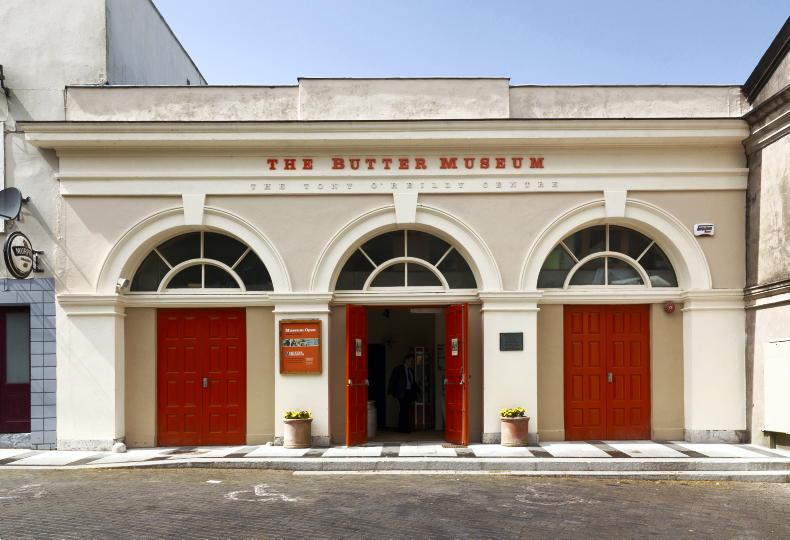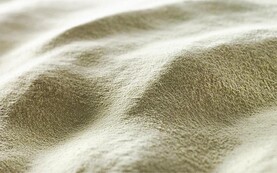Building a museum around butter could only work in Cork, given the city and county’s special relationship with the dairy industry generally and butter in particular.
Cork’s Butter Museum not only celebrates the city’s historic importance in the international butter trade, but it also traces the development of the Irish dairy sector from the early co-ops to the launch of Kerrygold and the rapid modernisation that characterised the industry in the 1960s, ‘70s and ‘80s.
Cork has a long association with the butter trade. In fact, there was a time when the city was at the very heart of the global butter trade, controlling prices and supplying markets on both sides of the Atlantic.
Exchange
Indeed, the city’s Butter Exchange, which was established in 1769, set the tone for the butter trade across much of northern Europe until the final decades of the 19th century.
The Exchange was the trading post for the majority of the homemade butter produced in Cork, Kerry and Limerick, counties which accounted for one quarter of cows in the country in 1854.
The famous butter road from Kerry through the Muskerry area of west Cork and on into the city was one of the more celebrated supply routes to the exchange.
However, butter was also transported to the Cork city trading centre from south Tipperary and west Waterford.
Volumes
The butter volumes sold through the exchange were impressive. At its peak in the late 1870s, the Cork Butter Exchange was trading 400,000 firkins or barrels of butter per annum, supplied by 70,000 to 80,000 farmers
“The precise weight of a firkin is disputed, but 70lb seems a defensible estimate,” explains museum director Peter Foynes.
Foynes estimates that around 13,000t of butter were traded through the Cork exchange each year.
“This makes it one of the great commercial successes of 19th century Ireland,” Foynes maintains.
The exchange created a trading network that reached from small farms in Cork and Kerry to places like Angola, India and the Caribbean
The Butter Exchange was also hugely innovative in the manner in which it approached and regulated its business.
“The exchange introduced a unique inspection system, which graded the butter on a scale of one to six. This was among the first, if not the first, food quality control systems in the world,” Foynes argues.
The butter trade also facilitated the opening up of new markets for Cork, consolidating the port city’s position as one of the country’s primary mercantile centres.
“Although the major market for butter from Cork was England, the exchange created a trading network that reached from small farms in Cork and Kerry to places like Angola, India and the Caribbean,” Foynes says.
The introduction of the mechanical separator in the 1880s opened the way for mechanically made factory or creamery butter.
This development made the farm-made butter that supplied the Butter Exchange redundant.
Leading exporter
The exchange continued to operate into the 1920s but Ireland’s position as a leading European butter exporter was eclipsed from the 1890s by Denmark and Holland.
“The exchange took a while to die, but the writing was on the wall very soon after the introduction of the mechanical separator,” Foynes comments.
The memory of the Cork Butter Exchange was all but lost by the late 20th century, with its fine buildings standing mute in the centre of the Shandon area of Cork city.
However, the opening of the Butter Museum in 1995, in a building beside the old exchange, helped to reignite interest in the former commercial phenomenon.
“The museum has a mission to both retrieve the history of the Butter Exchange and to mark the extraordinary success of the Irish butter industry and the depth of dairy culture in Ireland - a culture that extends from bog butter to Kerrygold,” Foynes explains.
Exhibitions
The museum has four exhibition zones. The earliest covers early Ireland and features a fine keg of bog butter, courtesy of the National Museum of Ireland.
A second room features the growth of the Butter Exchange in Cork. There is also a collection of objects from the now lost world of home and creamery butter making. These include butter churns, milk churns, keelers and butter spades.
The development of the modern dairy industry is explained in a short video which details the sector’s transformation from small local creameries to the major agri-businesses that constitute today’s processing industry.
The Butter Museum also has an active digital programme, making short films on the Museum’s collection and aspects of our dairy history. Subjects have included 'Cleeves', 'The Travelling Creamery' and 'The Coming of the Creamery'.
A fascinating collection of butter wrappers from the days of the old creameries is one of the highlights of the museum for many Irish visitors who remember butter being manufactured and sold locally.
“These wrappers, from every corner of the country, were once everyday items, but are now extremely rare,” Foynes says.
The Cork Butter Museum has won many plaudits at home and abroad, with the New York Times describing it as “engaging and multi-faceted”.
Surprisingly, Foynes says that around 75% of its 17,000 visitors each year are foreign tourists.
However, for those dairy farmers who wish to know where their industry came from, a trip to the Cork Butter Museum would be time well spent.






 This is a subscriber-only article
This is a subscriber-only article














SHARING OPTIONS: